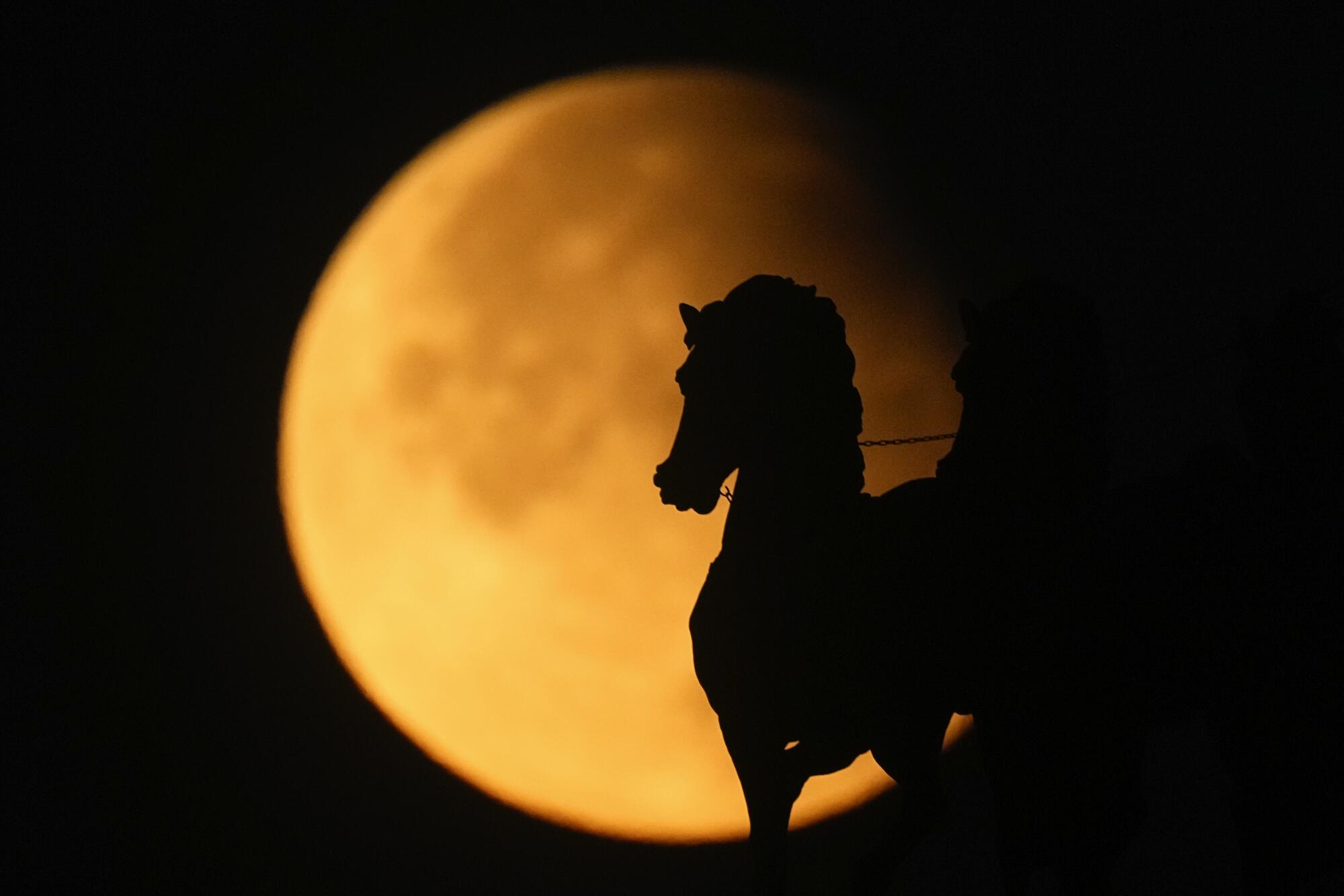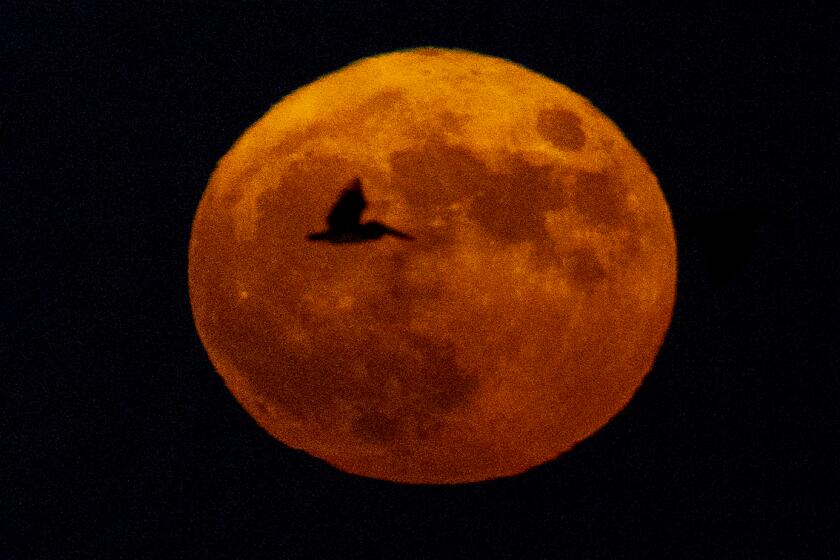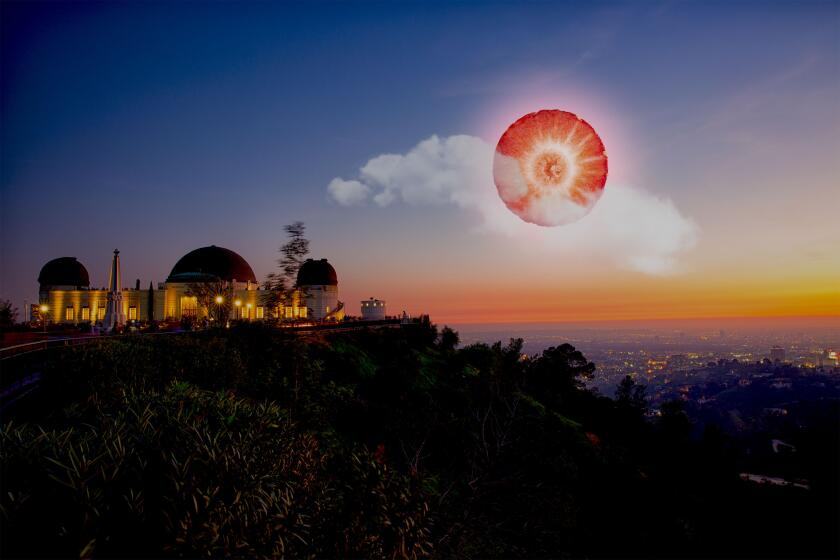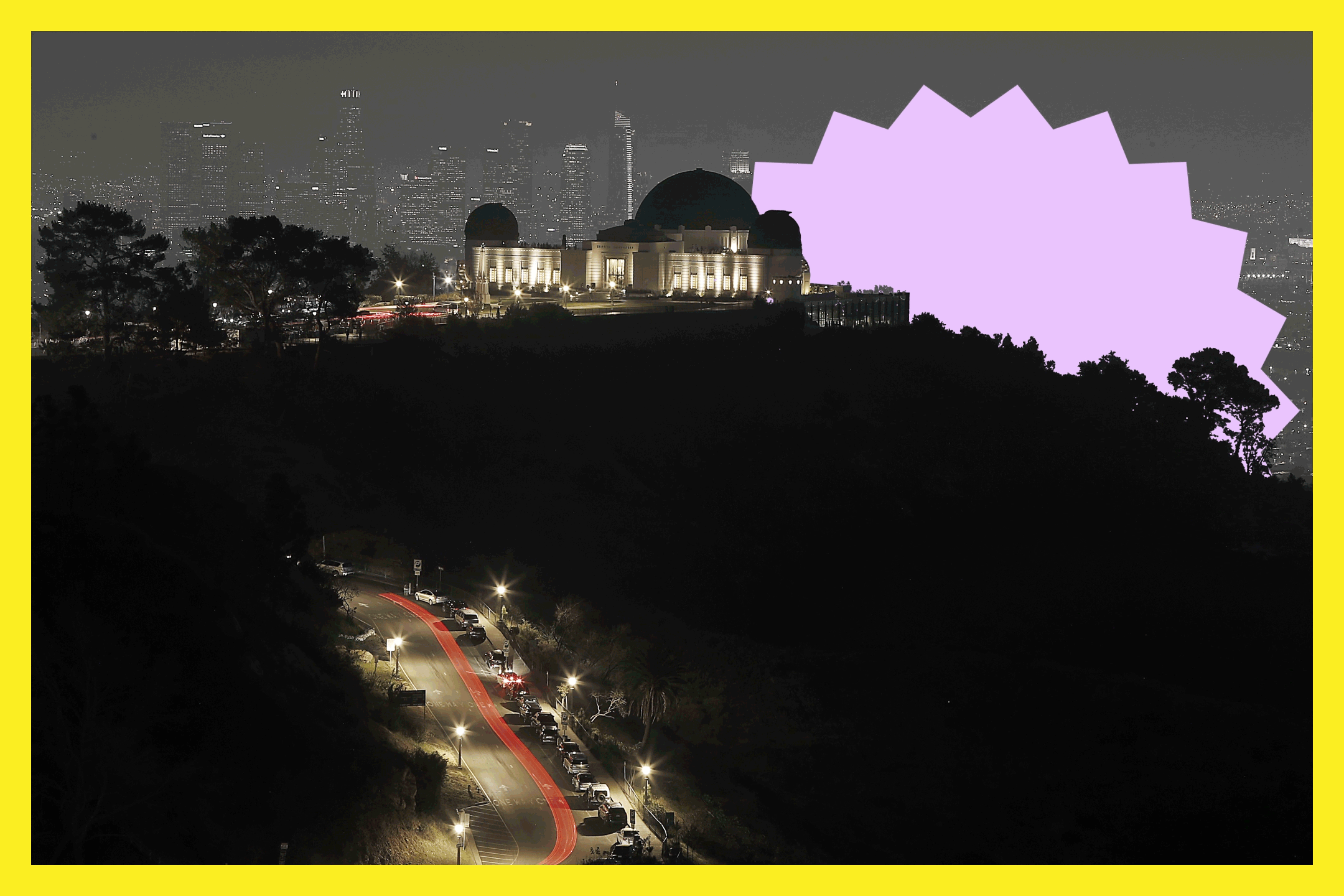
- Share via
The skies lighted up Tuesday night with a double lunar phenomenon: the harvest supermoon and a partial lunar eclipse.
Supermoons are full moons that appear larger because they happen roughly in tandem with the lunar orbit’s closest approach to Earth, known as perigee.
According to NASA, that means the moon looked 30% brighter and 14% larger than when the moon’s orbit is at its farthest from us, or apogee.
The full moon Aug. 19 will be both a supermoon and a blue moon. Aspiring astronomers can also try to spot the major lunar standstill.
Tuesday’s supermoon was a harvest supermoon because it was the full moon that appeared closest to the fall equinox. The name goes back hundreds of years, when farmers would sometimes use the moon’s light to work later in the evening.
But bright skies were not the only sight viewers may have noticed.

The full moon — the second in four consecutive months of supermoons — coincided with a partial lunar eclipse. A lunar eclipse happens when the Earth passes between the sun and the moon and casts a shadow on the moon.
Once upon a time, a full moon was just a full moon. Now it’s an Instagram-fueled event with a parade of names, from ‘super’ to ‘strawberry.’ We take a look at the history of moon mania.
In this case, about 3.5% of the moon appeared darkened by the Earth’s umbra, a term that describes the darkest segment of the Earth’s shadow.
Unlike with the solar eclipse in April, no special glasses are necessary to safely look at a lunar eclipse.
In Southern California, the moon rose at 6:52 p.m. The Earth’s biggest bite appeared at 7:44 p.m. and gradually dissipated over 31 minutes. By 9:48 p.m., the moon was at its brightest.
It’s just too hot in L.A. Hiking at night during a full moon offers an opportunity for a different sensory experience while giving you a break from the relentless heat.
Tuesday’s moon followed the Aug. 19 super blue moon. A blue moon does not describe the color of the moon; instead, it refers to the third full moon occurring in a season with four full moons.
Experts tend to consider supermoons as those that fall within 90% of the moon’s closest approach to Earth.
The August supermoon was about 224,000 miles from Earth. This month’s was a little closer: 222,000 miles away.
The next supermoons are Oct. 17 and Nov. 15.
More to Read
Sign up for Essential California
The most important California stories and recommendations in your inbox every morning.
You may occasionally receive promotional content from the Los Angeles Times.

















